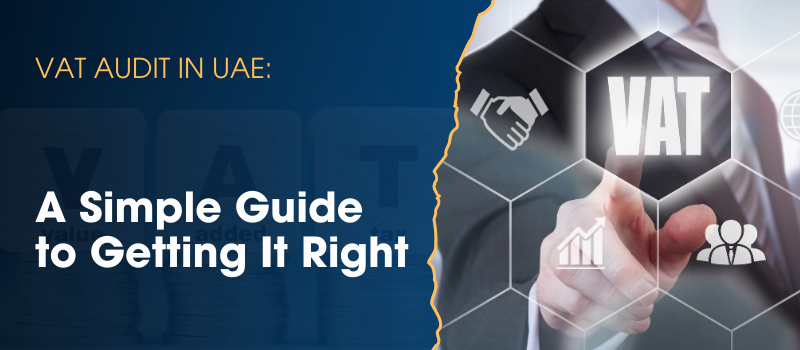Since VAT was introduced in the UAE back in January 2018, businesses have had to follow clear rules to stay compliant. But when it comes to VAT audit in UAE, many companies still find themselves caught off guard, often by issues that could have been avoided.
At Elevate Accounting & Auditing, we’ve worked closely with clients across industries to help them prepare for audits, fix reporting issues, and navigate FTA requirements. This guide highlights common roadblocks and shows what you can do now to avoid penalties later.
What the FTA Expects: VAT Audit in UAE Requirements
The Federal Tax Authority (FTA) is particular about how financial records should be maintained. Many businesses face setbacks simply due to poor accounting practices. Based on common audit experiences, here are the top issues:
- Accounting records don’t align with trade licenses.
- Trial balances are incomplete or mismatched.
- VAT entries lack system-level tax codes.
- No clear reconciliation between VAT returns and financial statements.
The FTA expects consistency across all records. Without it, gaps start to form—and that’s exactly what auditors pick apart.
Tax Classification: Where Most Mistakes Begin
Correct classification isn’t just a technicality—it directly affects how much tax is paid or refunded. Errors in this area tend to trigger red flags quickly during any VAT audit procedure in UAE.
Key problems we often see:
- Inco terms are skipped when reporting designated zone transactions.
- Taxpayers misunderstand who owns the supply, leading to misreporting.
- 0% of rated supplies are wrongly applied.
- Out-of-scope items are included where they shouldn’t be.
- Expense reimbursements and commissions are left out of the VAT equation altogether.
A strong grasp of supply types and classifications is non-negotiable. Once a mistake is recorded, it often repeats in every filing cycle.
FTA File Format: A Technical But Serious Barrier
The FTA has a set structure for how data must be shared. This usually comes into play when a business is asked to submit a file in the FTA Audit File (FAF) format. And this is where many stumble.
What typically goes wrong?
- FAF files are delayed or missing altogether.
- Key fields like invoice dates or receipt details are left blank.
- There’s no clear breakdown by legal entity, which the FTA expects for groups with multiple licenses.
These issues slow down the audit and give the impression of disorganisation—neither of which helps your case.
Documentation: The Most Underrated Part of a VAT Audit Checklist in UAE
VAT compliance is as much about proper paperwork as it is about numbers. If the supporting documents don’t match the reported data, the FTA will treat the transaction as invalid, even if the tax was calculated correctly.
Documents that often cause trouble:
- Export and exit certificates
- Supplier and customer declarations
- Payment certificates and contracts
- Poorly formatted or incomplete tax invoices
Each of these has to be complete, dated, and aligned with VAT filing details. Gaps in documentation can lead to rejected filings or added penalties.
Input VAT Claims: High Risk, High Scrutiny
Claiming input VAT might seem routine, but it’s one of the most heavily scrutinised areas in a VAT audit procedure in UAE.
Frequent mistakes include:
- Claiming VAT on insurance for dependents
- Using old or expired invoices
- Claiming before the correct date
- Submitting claims without original tax invoices
- Including non-qualifying expenses like private vehicles or entertainment
Once a claim is rejected, it’s not easy to justify or recover it, so getting it right the first time is key.
Industry-Specific Challenges: A Closer Look
Not all sectors face the same VAT hurdles. Some are more exposed than others, and here’s where we’ve seen the most repeated issues:
- Healthcare: Missed conditions for applying 0% tax under Cabinet Decision rules.
- Transportation & Logistics: Exempt supply errors and miscalculations in annual wash-up adjustments.
- Real Estate: Mishandling advance payments and classifying supplies incorrectly.
- Sole Establishments: Recordkeeping gaps, incorrect legal status in tax profiles, and misreported transactions.
Each industry has its own pressure points. For many, simply revisiting their VAT audit checklist UAE can highlight where the cracks are.
Ready for a VAT Audit in UAE?
Getting ready for a VAT audit in UAE isn’t just about reacting to an FTA notice. It’s about knowing your weak spots before they become penalties. A trial audit can expose reporting gaps, outdated practices, or missing documentation, giving you time to act.
At Elevate Accounting & Auditing, we support businesses across the UAE with in-depth VAT health checks, sector-specific guidance, and hands-on audit support. If you’re unsure about your readiness, now’s the time to review.
Let’s talk today – before the FTA knocks tomorrow.

